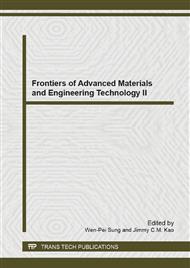p.1383
p.1386
p.1391
p.1395
p.1399
p.1403
p.1407
p.1412
p.1416
Study on Integral Minimum Method Aspheric Surface Measuring
Abstract:
Based on the traditional aspheric surface shape measuring difficulties, a kind of new integral minimum method is presented, whose guiding idea of this method is to make right position for the parts theoretical curve and the measuring curve to sure the error sum to be minimum. The definition of integral minimum method is elaborated, for example parabolic, its surface shape error is discussed, and the right position expression is derived for the parts theoretical curve and the measuring curve. The calculating example shows that the integral minimum method is effective to analyze the real parts contour error due to the right position, so it should be a followed law objectively during the parts surface shape measuring.
Info:
Periodical:
Pages:
1399-1402
Citation:
Online since:
April 2014
Authors:
Price:
Сopyright:
© 2014 Trans Tech Publications Ltd. All Rights Reserved
Share:
Citation:


